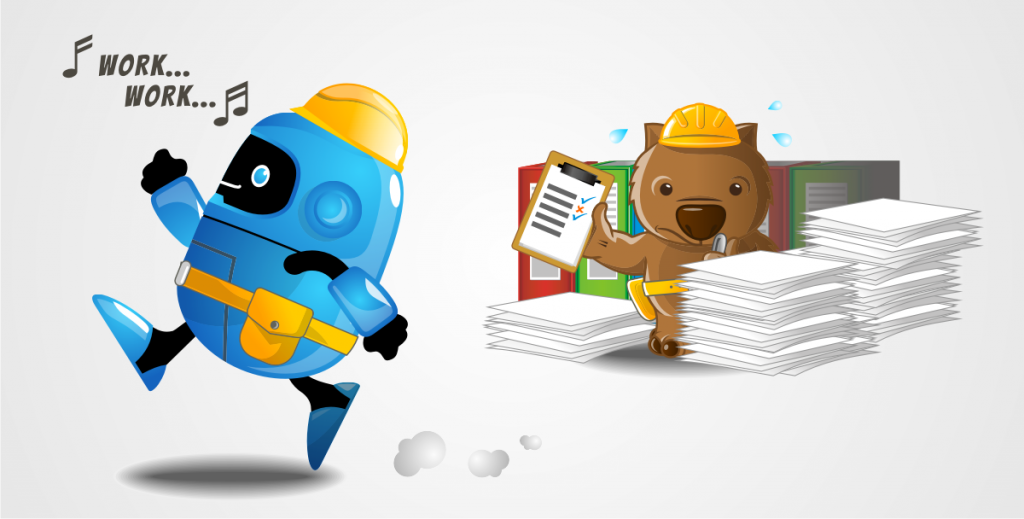Risk Assessment Workflow for Construction Workers
In the hussle and bussle of high risk construction work, an independent contractor will be on several different sites in a month so having a firm understanding of the risk assessment worksheet is vital. At each construction site they must carry out several safety and risk management processes or face strict penalties. Below is a high-level diagram of the processes that construction contractors should carry out based on our risk assessment productivity case study.

1. Create Risk Assessment: Before starting any high risk construction work, a risk assessment must be conducted. Also known as a job safety analysis, risk assessments must include a safe work method statement (SWMS) and a risk assessment matrix.
2. Present to Foreman: The foreman or manager on the worksite must be presented with the risk assessment and SWMSs before work commences.
3. Conduct Work: All work should be conducted in a safe manner that complies with the safe operating procedures specified in the risk assessment.
4. Filing and Auditing: At the end of the day (or job) the risk assessments and SWMS’s should be filed and kept to pass any possible audits within the next 7 years.
There are two really good reasons why you should do risk assessments. First and foremost, they are designed to help keep your workmates safe. It is possible that a period of time will elapse between your team’s risk assessment training and its actual practice. So a risk assessment is a great way to remind your team of the inherent risks in high risk construction work and show them what risk management steps must be taken. The second reason you should do risk assessments is that you are legally required to. The Workplace Health and Safety Act 2011 states that before carrying out any high risk work you must do them or face strict fines and penalties.
So, where to from here? If you have a paper-based process in place, have a look at how much time and how much money this costs your business. Or if you are ready to tech-up and automate your process online then have a look at SafeWorkPro. Lets work safe Australia!


 The services of a highly qualified professional team that is dedicated to outstanding customer service – every time.
The services of a highly qualified professional team that is dedicated to outstanding customer service – every time. Innovation and the ability to adapt to every situation are qualities that are instilled in all of our team.
Innovation and the ability to adapt to every situation are qualities that are instilled in all of our team. Safety is our number one priority and with the work that we do it is always our first consideration.
Safety is our number one priority and with the work that we do it is always our first consideration. We are well connected not only within the industry in Australia but worldwide so that we always have the most current solutions and information available for you.
We are well connected not only within the industry in Australia but worldwide so that we always have the most current solutions and information available for you. We are not only part of the community we are dedicated to supporting the community as we believe that we all need to take responsibility to help others.
We are not only part of the community we are dedicated to supporting the community as we believe that we all need to take responsibility to help others.